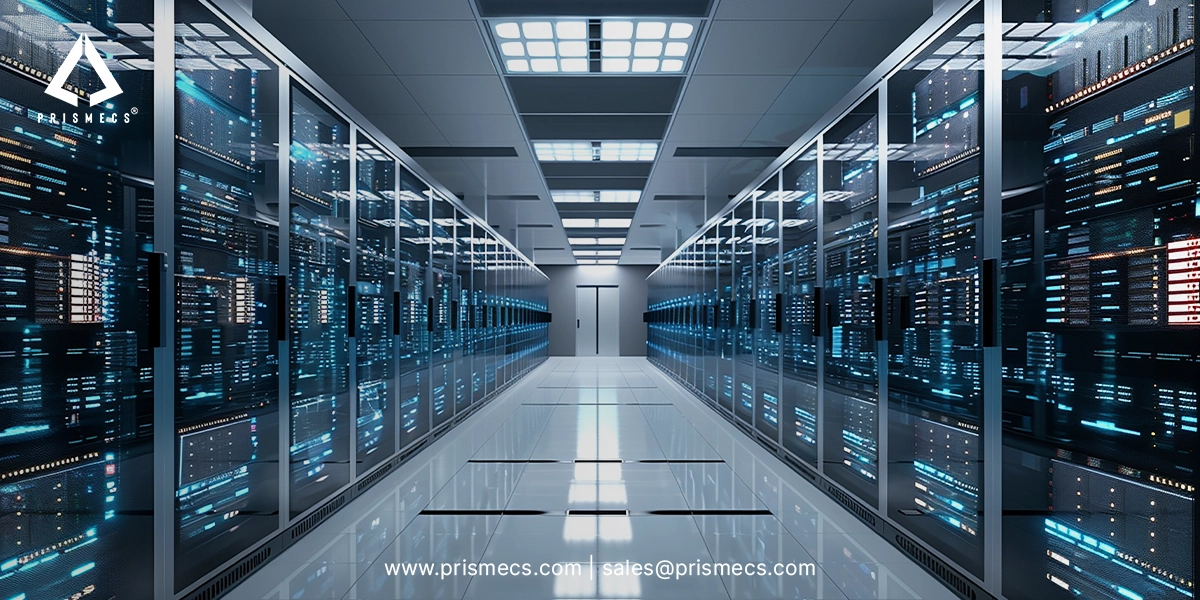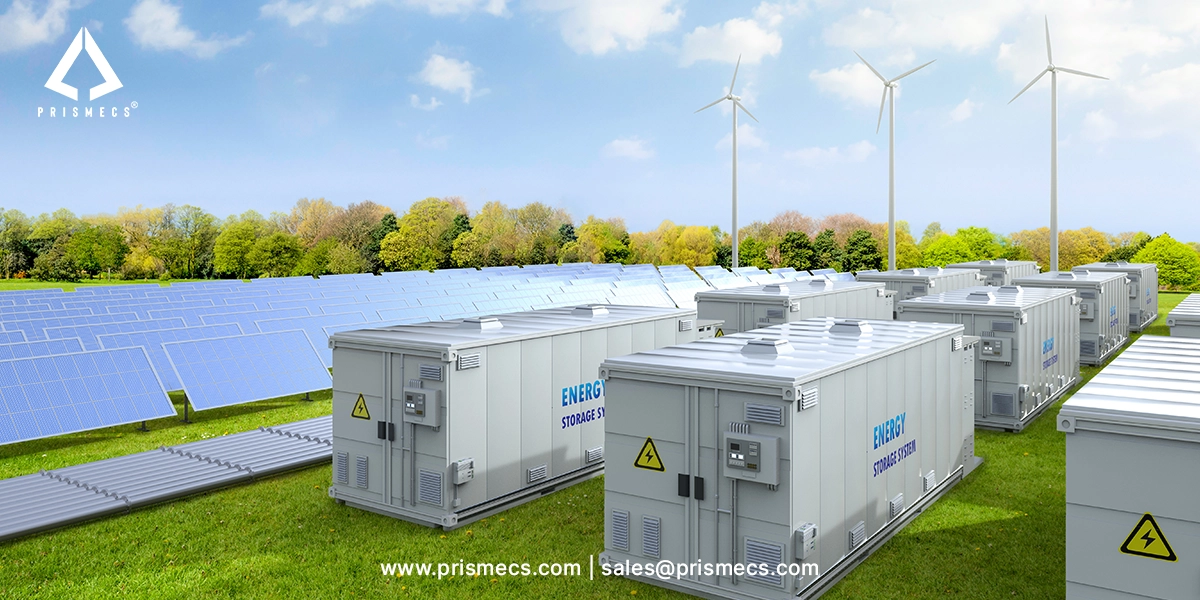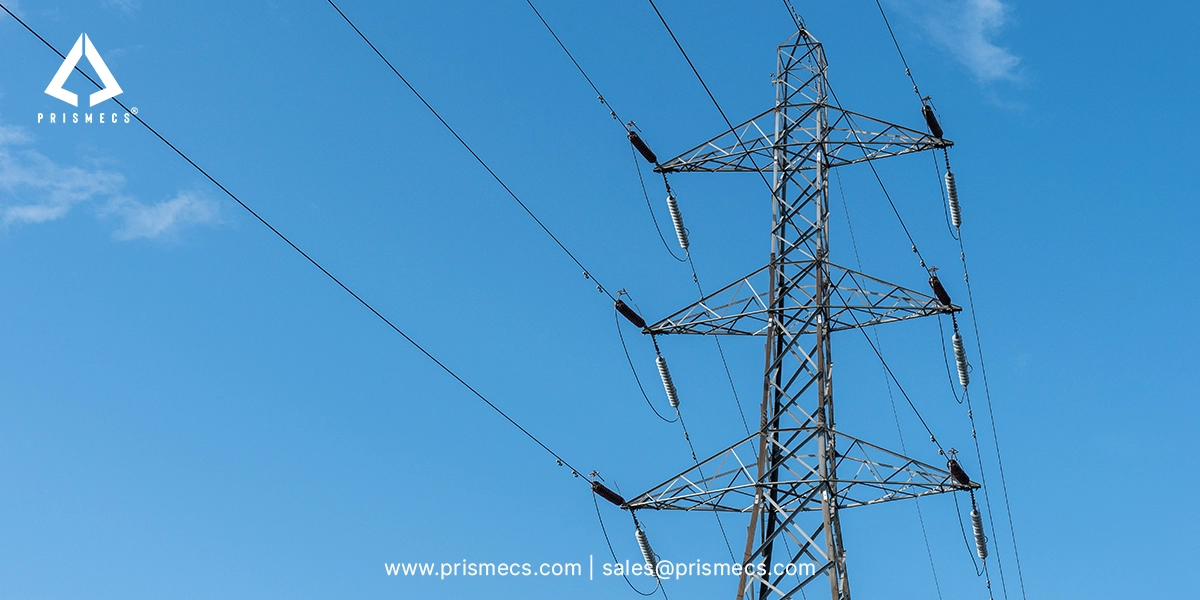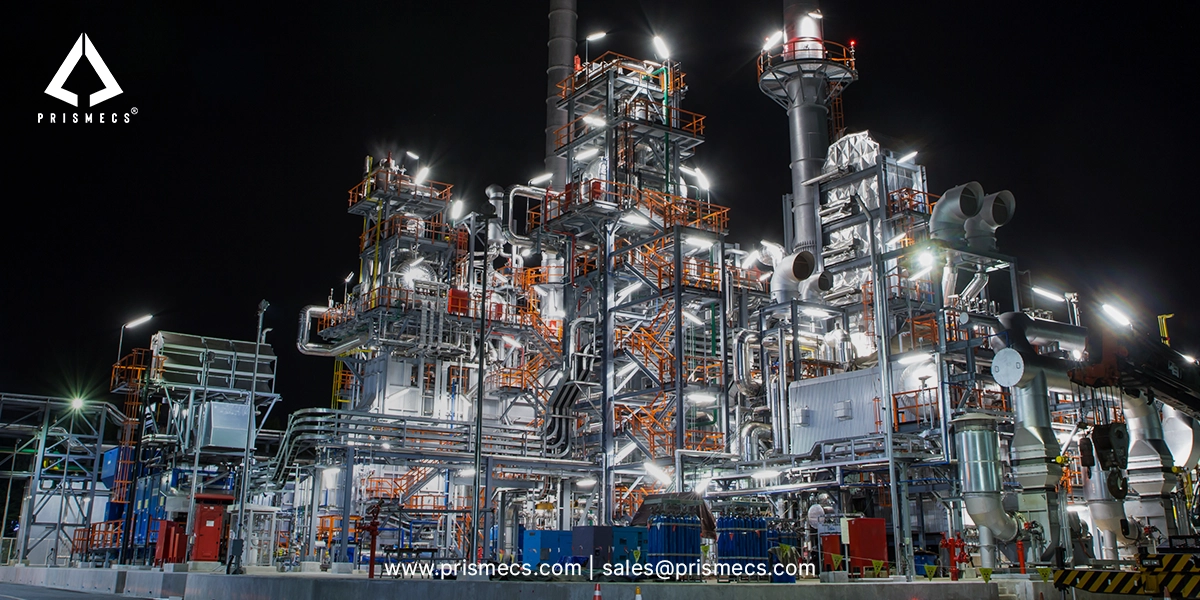
In today’s digital era, your business needs more than simply “somewhere to store data.” Your choice of a data center provider can make or break performance, security, and cost in the long run. Companies in power, energy, or digital infrastructure gain high performance by choosing the right partner. They achieve reliability and resilience that align with their technical and business goals.
When you search for data center companies, you find a wide range of offerings. These include cloud service providers, global data center operators, edge computing hubs, and full-scale managed services. You must evaluate carefully. Below, we will guide you through clear, actionable steps to pick the right data center provider for your company.
Define Your Requirements First
Before evaluating any power grid solution providers, it's essential to clearly define your technical and operational needs. Consider factors such as energy load, reliability expectations, regulatory compliance, integration with renewables, and scalability for future growth. A well-defined set of requirements streamlines the selection process. It ensures you choose a partner aligned with your specific goals.
Capacity & Workload
Do you need to host legacy servers, high-performance computing clusters, or cloud-based virtual machines? Will your data storage requirements grow as your operations expand? Businesses today face increasing pressure to manage workloads efficiently while keeping up with the pace of digital transformation. Global demand for data center capacity could be more than triple by 2030. This growth makes scalability and flexibility essential for businesses operating in a connected world.
Global demand for data center capacity could more than triple by 2030.
Performance
Do you need low latency for real-time data exchange, or ultra-fast bandwidth for handling large-scale cloud-based applications? As businesses operate in data-driven environments, optimizing performance becomes key to ensuring smooth operations. Whether supporting digital transformation initiatives or maintaining critical data storage systems, high performance enables companies to deliver consistent results to end users.
Geographical Reach
Do you need a global data center footprint, or will one region suffice? As businesses operate across borders, proximity to users helps reduce latency and improve reliability. A strategic global presence supports cloud-based services and digital transformation goals. It ensures that data storage remains secure and accessible wherever users need it most.
Regulation, Security, and Compliance
If you handle critical infrastructure or regulated data, such as power grid controls, ensure compliance. You must follow relevant standards, such as ISO, SOC, GDPR, or HIPAA, depending on the location.
Disaster Recovery & Business Continuity
What level of redundancy do you require? What is your acceptable downtime? What recovery time objective (RTO) and recovery point objective (RPO) do you need?
Related: Cutting-Edge Technologies Enhancing Energy Efficiency in Data Centers
Evaluate Provider Reputation & Expertise
When you pick up a data center provider, reputation and track record matter a lot. Look for examples of providers like Digital Realty or Iron Mountain. These companies have deployed many data center facilities globally, giving them proven expertise. Ask for case studies. See how they handled high-performance workloads, disaster scenarios, and edge computing deployments. Check whether they offer management services that match your needs. These include monitoring, remote hands, managed backup, and network configuration. A provider that handles large‑scale, demanding workloads already demonstrates an understanding of critical infrastructure. That builds confidence.
Assess Uptime, Tier, Redundancy & Power Design
Downtime incurs costs, especially when your cloud solution or operating system depends on continuous performance. Ensure your provider offers strong uptime guarantees. Include redundant systems for reliability. Maintain a reliable cloud storage setup for data safety.
Check the Tier rating
Evaluate the Tier rating of your data center. Tier III or Tier IV data centers offer higher reliability for hosting advanced workloads. These include machine learning models and large-scale cloud solutions.
Tier IV centers include dual power and cooling paths with no single point of failure. This design makes them ideal for mission-critical environments.
Examine SLAs
Look for service-level agreements (SLAs) that promise at least 99.99% uptime. You might even need “five 9s” for critical systems like machine learning platforms. Cloud-based operating systems also require that level of reliability. Providers should ensure backup power and multiple generator sources. They should include UPS systems and redundant cooling to protect cloud storage and operations.
Ensure Connectivity Redundancy
Verify that your provider offers multiple carriers, diverse paths, internet exchange access, and cross-connects. Network redundancy ensures your cloud solution, and machine learning applications continue to run even if one path fails. Network reliability is just as essential as power stability. These checks protect your infrastructure from outages, performance dips, and potential data loss. They ensure consistent performance for your cloud storage and operating system needs.
Location, Latency & Edge Computing Considerations
Where the data center sits matters as much as what it offers. The right Infrastructure as a Service (IaaS) provider helps reduce costs and improve performance. It ensures data reliability for IoT devices and enterprise workloads.
Proximity to users or operations
If your business serves many users in a specific region, place the data center closer to that region. This location choice dramatically reduces latency and enhances the user experience. For edge computing or IoT applications, localized data processing is critical to minimize delays and increase efficiency. When paired with public cloud connectivity, businesses can achieve a flexible, cost-effective setup that balances performance and budget.
Natural disaster risks and environmental stability
Choosing a data center site involves evaluating environmental safety and climate advantages. Avoid regions prone to floods, earthquakes, or other natural disasters. Opt for areas with stable weather patterns and access to natural cooling benefits. Locations that support energy-efficient hardware and software systems promote long-term sustainability. They help companies reduce costs and carbon footprints.
Power availability & cost
Data centers consume large amounts of power to run servers, networking gear, and cooling systems. You must assess the local grid’s reliability. Evaluate the cost of power and check the availability of renewable sources. A dependable IaaS provider offering efficient hardware and software management can optimize power use and integrate public cloud scalability. This approach ensures uptime and delivers a cost-effective solution. It helps businesses seek high performance with minimal waste.
Security & Compliance
Security must lie at the core of your decision. A reliable data center provider offers robust protection against physical breaches and cyber threats. It ensures full compliance with industry standards.
Physical security
Look for providers that implement 24/7 surveillance, biometric access controls, mantraps, and layered security perimeters. These measures prevent unauthorized access and ensure only verified personnel can enter critical areas.
Cybersecurity
Strong cybersecurity uses data encryption both at rest and in transit. It includes advanced firewalls and intrusion detection systems. It also ensures protection through regular security audits. These defenses safeguard sensitive data and protect your infrastructure from evolving digital threats.
Compliance
Certifications such as ISO 27001, SOC 2, and PCI‑DSS, depending on your sector. If you operate globally or handle sensitive data, regulations may require that data remain local. Some regulations require that data remain within certain jurisdictions. A data center provider that betrays your trust in security exposes you to legal risk. It also causes financial losses and damages your brand.
Disaster Recovery & Global Continuity
Disaster recovery plans define how you bounce back from failures or disasters. These plans reduce risk and ensure uptime. Ensure the provider offers disaster recovery services, ideally across multiple data centers. If one facility fails (due to power outages, weather, or an attack), you shift operations quickly.
Ask:
- How often do they test their disaster recovery?
- What is their historic performance? Do they keep mirrored environments and backups off-site?
If you need managed services, check if the plan includes disaster recovery planning or backup. Verify if the service package offers them or if you must set them up yourself.
Managed Services & Support
Choosing a data center provider only for space and power isn’t enough if you don’t get strong support. See whether they offer management services: remote hands, hardware maintenance, monitoring, patching support, and service desk.
Check Responsiveness
A dependable data center provider should offer 24/7 support with a clearly defined escalation process. Ask how quickly they respond to incidents and whether they have on-site technicians available around the clock. Fast, effective support during emergencies can significantly reduce downtime and operational risk.
Customer Experience
Client feedback reveals a lot about day-to-day service quality. Look for reviews or case studies that highlight the provider’s flexibility, transparency, and ability to resolve issues quickly. A provider shows a proven track record of client satisfaction. Such a provider is likely a reliable long-term partner.
Scalability, Flexibility & Future Proofing
Your data center needs will evolve. Choose a provider who grows with you. Ensure there is physical space, power, and cooling margins for expansion. Confirm that the provider supports hybrid architectures, including on-prem, cloud service connections, and edge deployments. Many businesses use a mix of cloud services plus a physical data center or colocation. Ask whether the provider embraces cutting-edge technology, such as high-density racks and advanced cooling systems. Include free cooling or innovations in digital infrastructure in your evaluation.
Connectivity & Internet Exchange Points
High bandwidth, low latency, and strong network ties are non‑negotiable. Carrier neutrality: the provider supports multiple ISPs, so you don’t tie yourself to a single carrier. The presence of Internet Exchanges (IXPs) helps reduce latency and transit costs. Providers who host IX facilities can give you faster, more reliable routing.
Data centers worldwide run over 18 million servers. These servers put significant strain on the local electricity grids.
Check bandwidth options and connectivity redundancy. Check direct cloud on-ramps if you use cloud service providers. Check them if you plan to integrate with cloud service providers.
Cost, Contracts & Transparency
Even technically perfect providers can fail to meet your expectations if contracts, cost, or hidden fees create surprises. Understand pricing for space, power consumption, cooling, cross‑connect fees, bandwidth, and managed services. Review SLAs and contractual obligations carefully. Know what happens when uptime drops, what compensation you get, and who is responsible for what. Look for transparent billing. Avoid providers that bury extra charges.
By 2030, companies will invest almost $7 trillion in global capital expenditures on data center infrastructure.
Flexibility in contract length and terms helps. You may start small, then scale your operations. You may try edge computing for part of your operations. You may keep core data in a global data center.
Sustainability & Energy Efficiency
Energy matters more than ever. Companies in the power and energy sectors value sustainability beyond good PR. It aligns with their core mission and follows regulatory trends. Look for providers that use renewable energy, such as solar or wind, or other clean sources.
Data centers account for 1% - 1.5% of global electricity use, and operators acknowledge their environmental impact.
Check cooling systems: free‑air cooling, liquid cooling, intelligent airflow, and high-efficiency cooling. Examine tech such as PUE (Power Usage Effectiveness), DCIE, and green power incentives. A data center provider with lower PUE lowers your overhead and environmental footprint.
Putting It All Together: Decision Checklist
Here’s a quick checklist you can use in selecting your data center provider:
Criteria | Ask / Verify |
Uptime / Tier Rating | What uptime % do you guarantee? What is Tier? |
Location & Latency | Where is the facility? How far from your users or operations? |
Security & Compliance | Physical & cyber security, certifications, data sovereignty |
Disaster Recovery | DR services, cross‑site backups, RTO / RPO |
Connectivity / Internet Exchange | Carrier options, bandwidth, IXP, direct cloud links |
Managed Services | Onsite support, remote hands, monitoring, SLAs |
Future Growth Power | Power, cooling, space, edge computing support |
Cost & Contract Clarity | Transparent billing, flexible terms, no hidden fees |
Sustainability | Energy sources, cooling tech, efficient design |
At the Bottom Line
You can’t afford to compromise on core infrastructure. Your data center provider must align with your priorities in reliability, edge computing, and services. The right provider boosts uptime and gives you confidence in disaster recovery. It reduces operational costs and supports the integration of edge computing and cloud services. It ultimately makes your operations future-proof.
Why Prismecs Says the Right Provider Means Stronger Business
At Prismecs, we see that energy & power sector clients need high-performing, cutting-edge digital infrastructure. Their applications efficiently handle grid control, renewable energy forecasting, and sensor networks. They manage edge computing for remote sites and Internet exchange hubs effectively. Performance and reliability matter in every operation. We help clients evaluate data center companies using these criteria. We advise clients to work with providers offering space, power, and holistic global infrastructure.
We guide them toward securely managed services and disaster recovery plans matching their risk profile. To avail of our data center services, call us at +1 (888) 774-7632 or email us at sales@prismecs.com.
Tags: Data Center Provider Data Center Companies Global Data Center Cloud Service Edge Computing Internet Exchange
recent posts

EPC Services
7 minutes read
EPC Power: From Design to Delivery of Reliable Energy System
Discover how EPC power solutions streamline design to delivery, ensuring reliable, efficient, and future-ready energy systems in one integrated proces...

Data Centers
12 minutes read
Powered Shell Data Centers | Benefits, Design & Adoption
Discover the benefits, design, and adoption of powered shell data centers. Learn how they boost speed to market, scalability, and energy efficiency.

Distributed Energy Services
9 minutes read
Smart Grid and Distributed Energy Resources
Discover how smart grids and distributed energy resources (DER) work together to create efficient, resilient, and sustainable energy systems for the f...

Petrochemicals
8 minutes read
Petrochemical Plant Operations Explained
Discover how petrochemical plant operations work, from raw material processing to product output. Learn key processes, safety, and technologies involv...